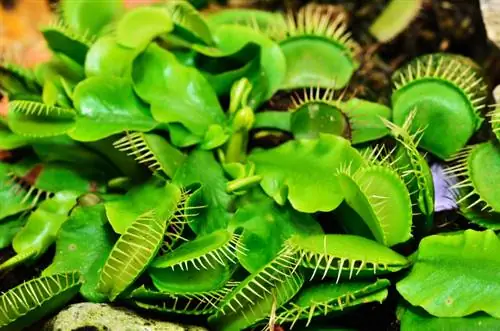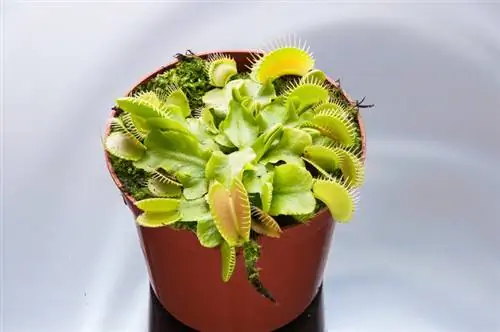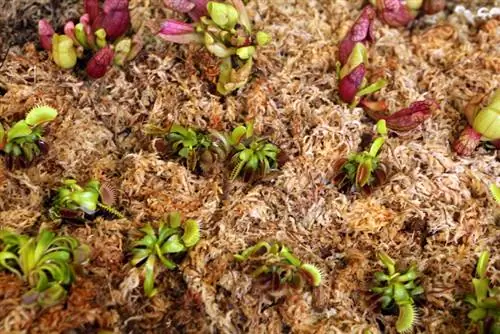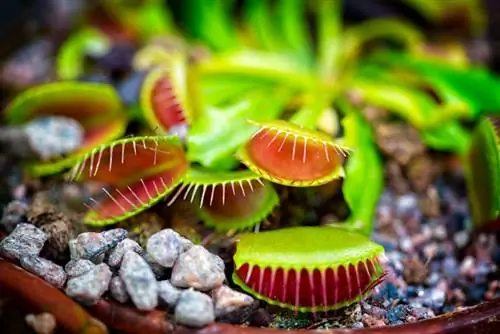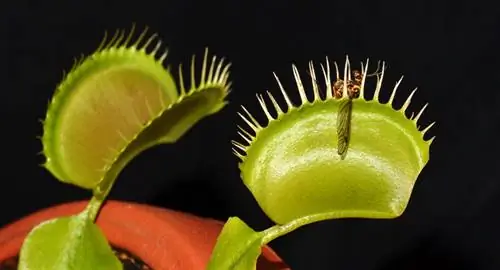- Author admin [email protected].
- Public 2023-12-16 16:46.
- Last modified 2025-01-23 11:20.
In the wild, the Venus flytrap reproduces via seeds and by forming new rhizomes. The propagation of cultivated plants indoors can also be achieved using leaf cuttings. How to Propagate Venus Flytraps.
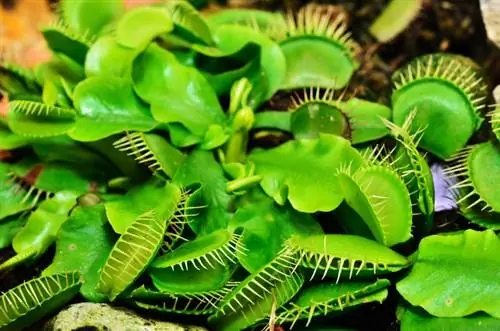
How do Venus flytraps reproduce?
Venus flytrap Reproduction occurs through seeds, division of rhizomes or leaf cuttings. Seeds need a cold period and light to germinate. Rhizomes are divided in spring when repotting, and leaf cuttings need to root for a few weeks before transplanting.
The methods of reproduction of Venus flytraps
- Seeds
- Division
- Leaf cuttings
The easiest way to breed Venus flytraps is by division. The plant forms new rhizomes every year. This form of reproduction is also the fastest. If you grow Venus flytraps from seeds or cuttings, you need a lot of patience until flowers and the characteristic folding traps form.
Reproduction via seeds
If the flowers that develop from the third or fourth year are not cut, seeds will form after pollination. You can harvest this and sow it yourself.
Note that the Venus flytrap belongs to the cold germinators and the light germinators. The seeds must go through a cold phase and must not be covered after sowing.
Propagation via rhizomes
Reproduction via rhizomes is extremely easy. In spring, when you should repot your Venus flytrap anyway, simply divide larger plants.
All you have to do is pull the Venus flytrap apart with your hands (€17.00 on Amazon). Plant the offshoots obtained in this way in new pots filled with carnivore soil. The young plants are cared for in the same way as adult specimens.
Growing new plants from leaf cuttings
To propagate Venus flytraps via leaf cuttings, you need a he althy plant. Cut the leaf as low as possible to the base. It is ideal if there is still some root left on the cutting.
Prepare pots with loose peat and insert the leaf cutting into them. Place the pot in a very bright place, but not in direct sunlight.
Ensure that the plant substrate remains evenly moist. It can take a few weeks for the first roots to develop. The offshoot is then placed in pots with carnivore soil and cared for as normal.
Tip
Venus flytraps are probably the most well-known carnivorous plants, although they only occur in a very limited area in nature. Caring for the carnivorous plant is not easy. As a beginner's plant, the newcomer should prefer butterwort species.

